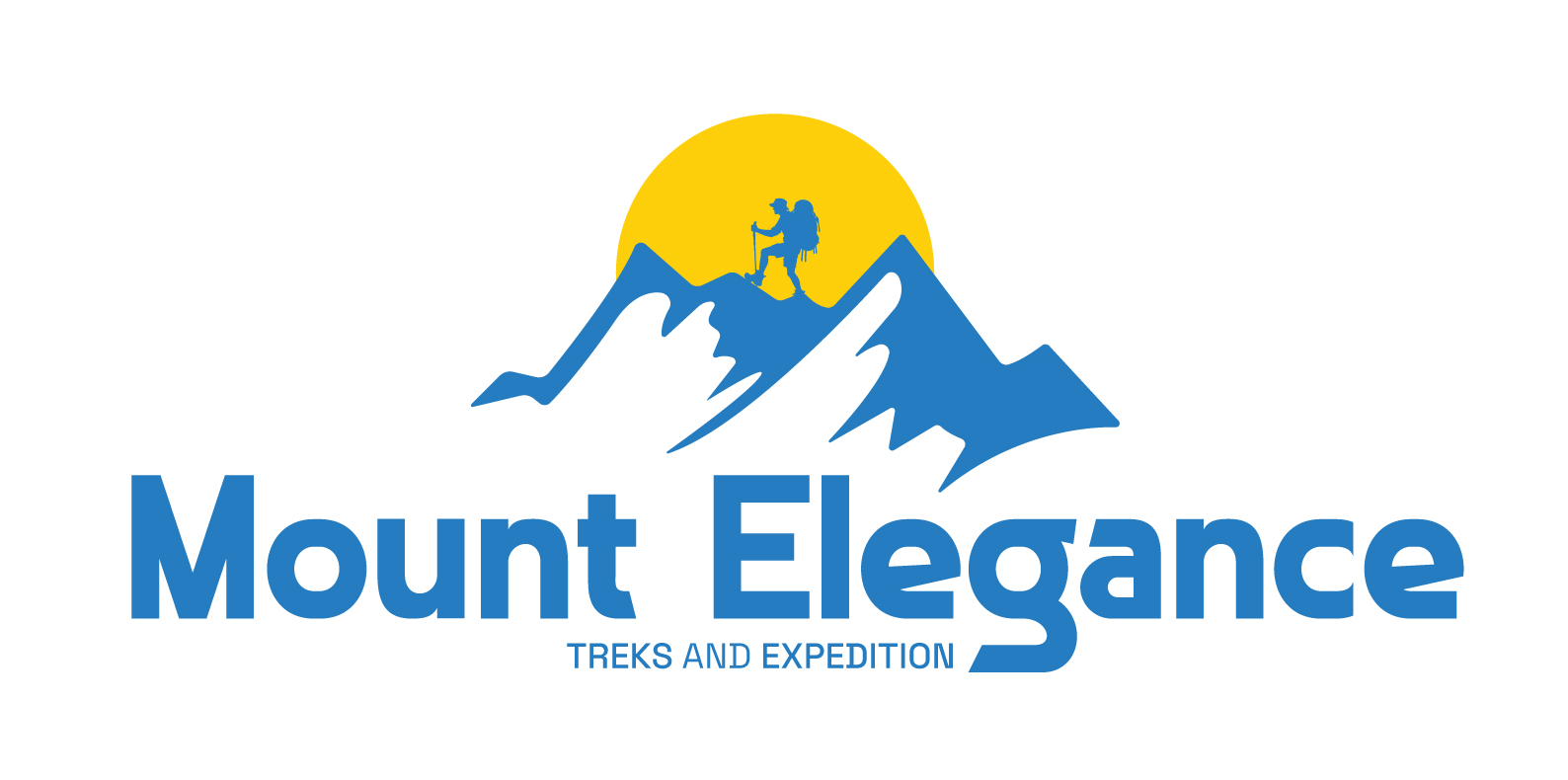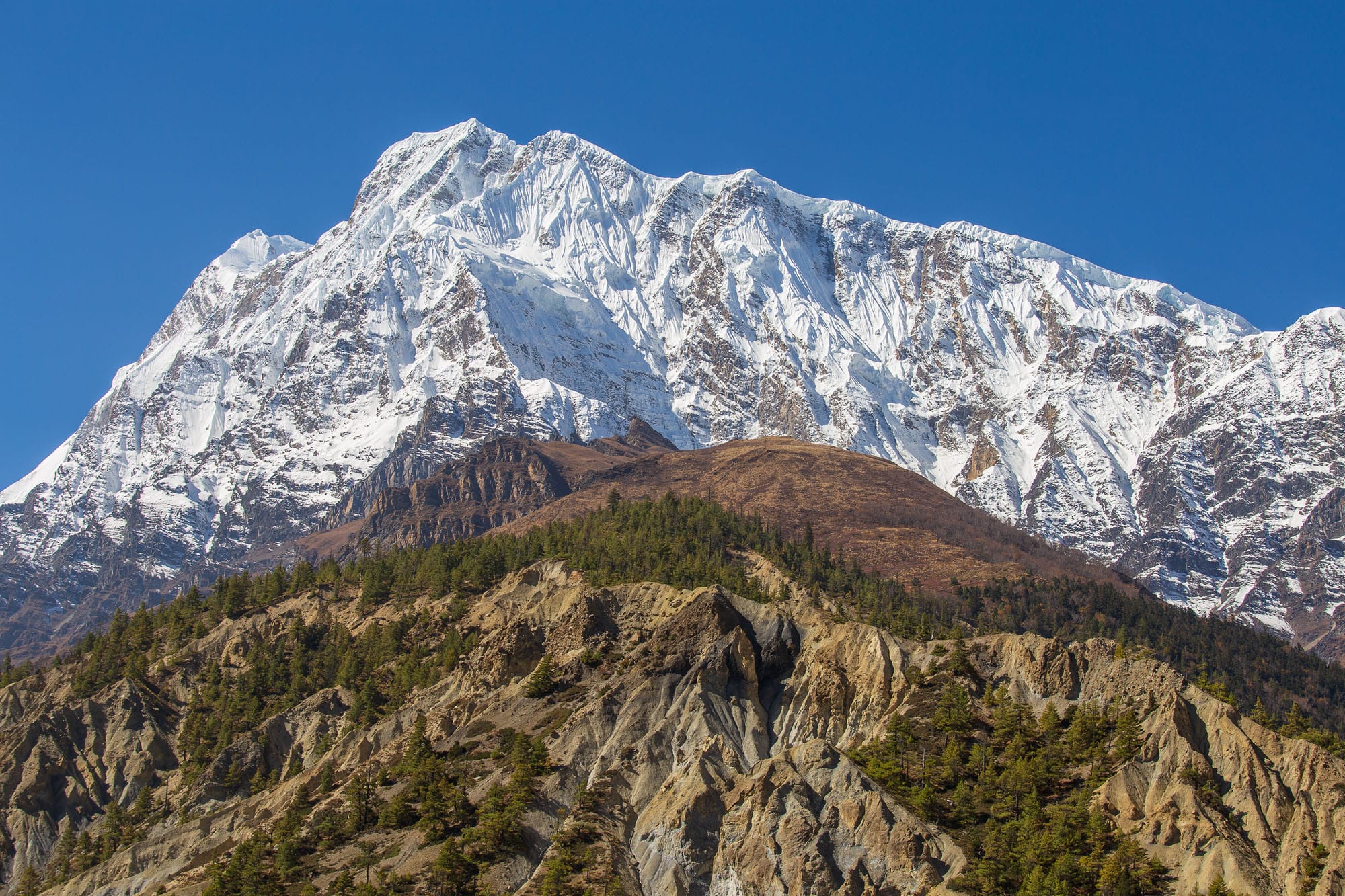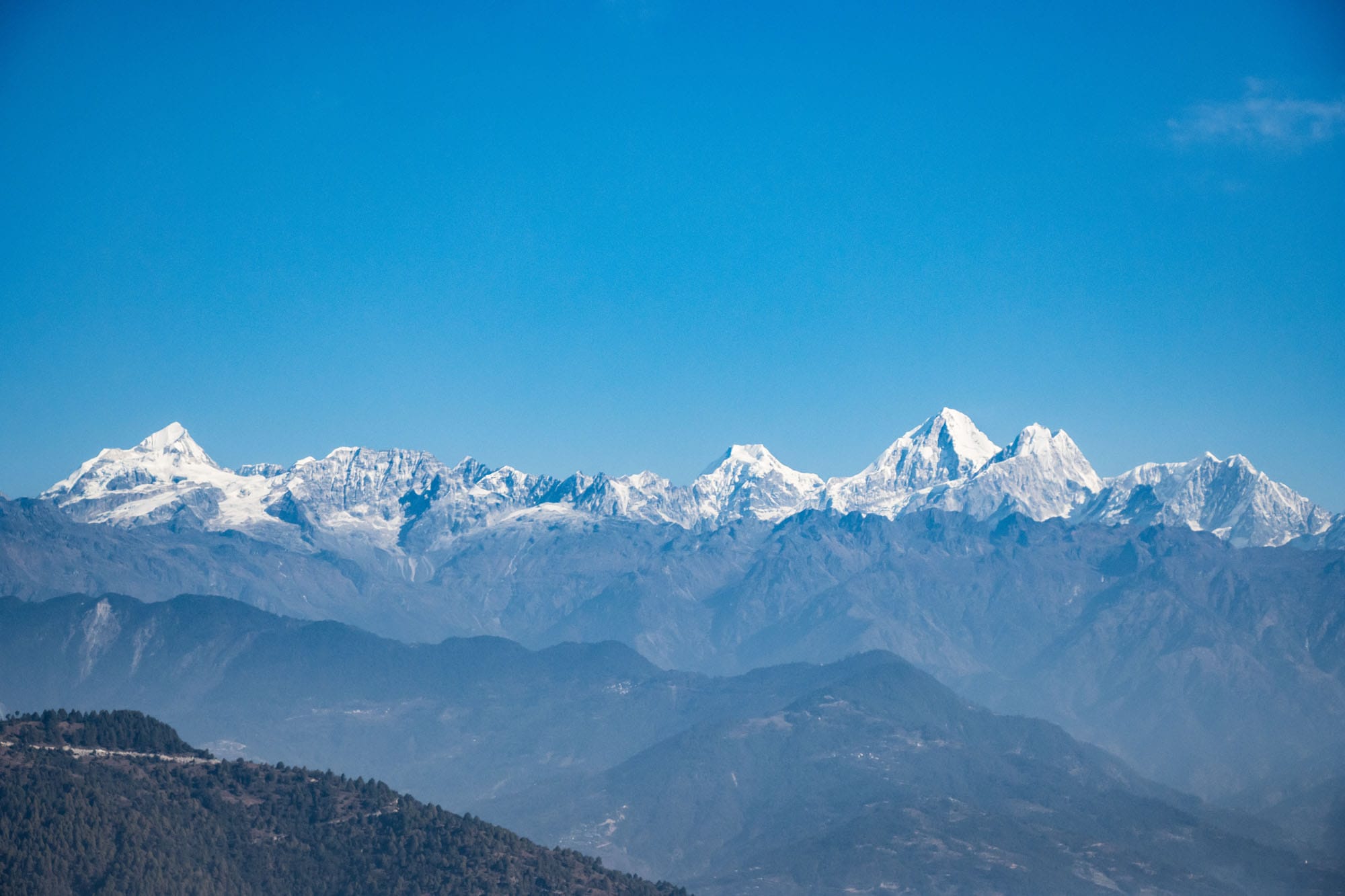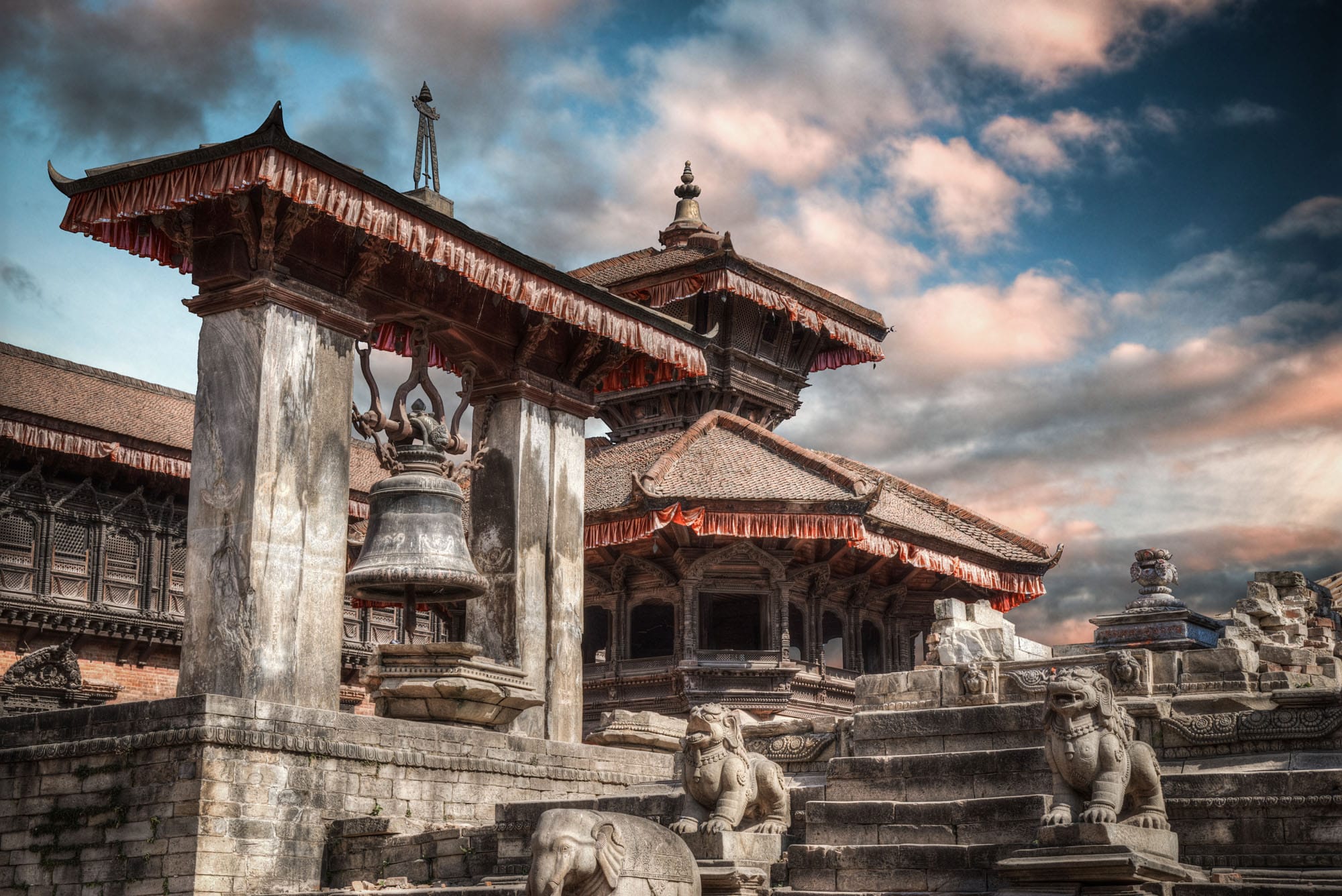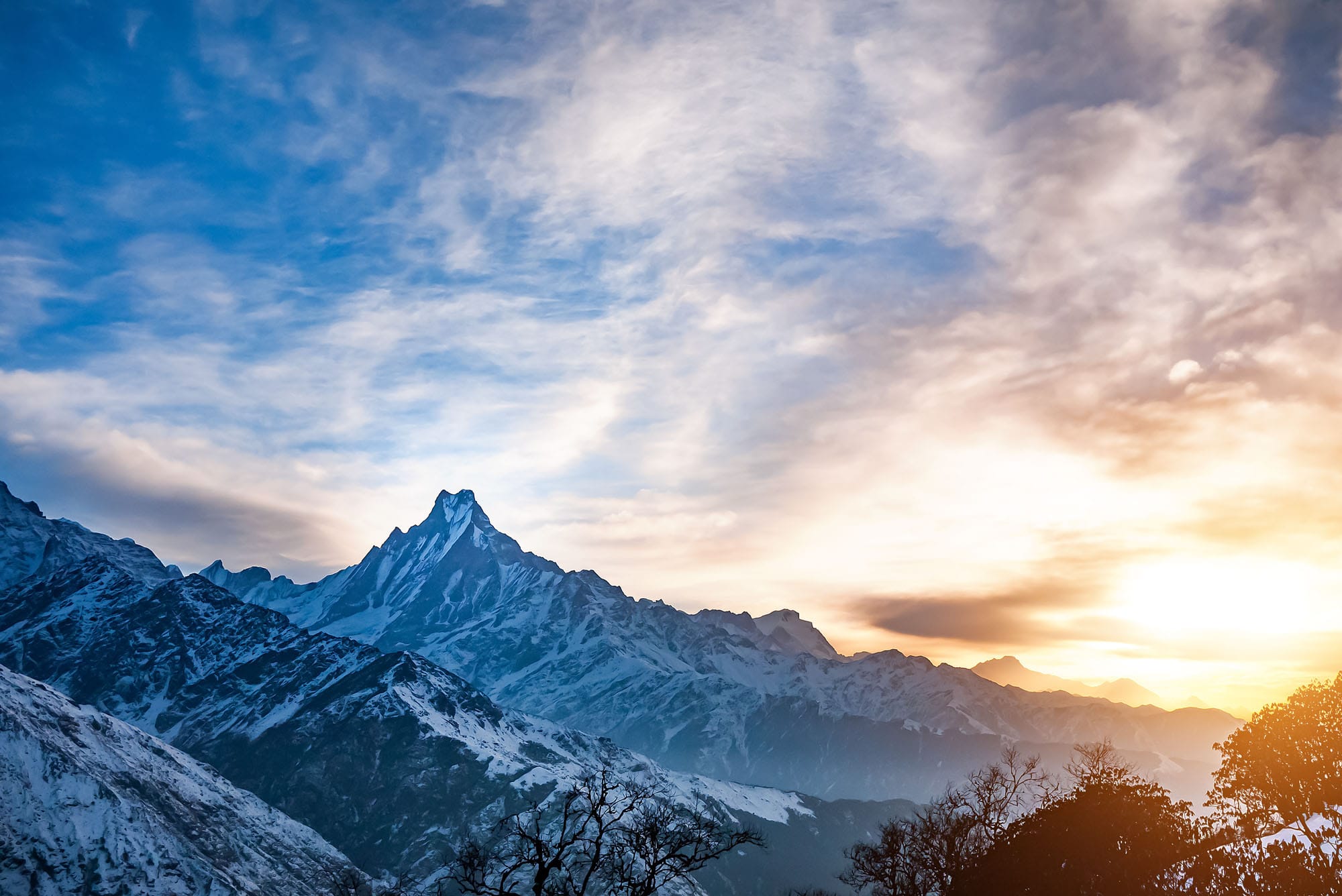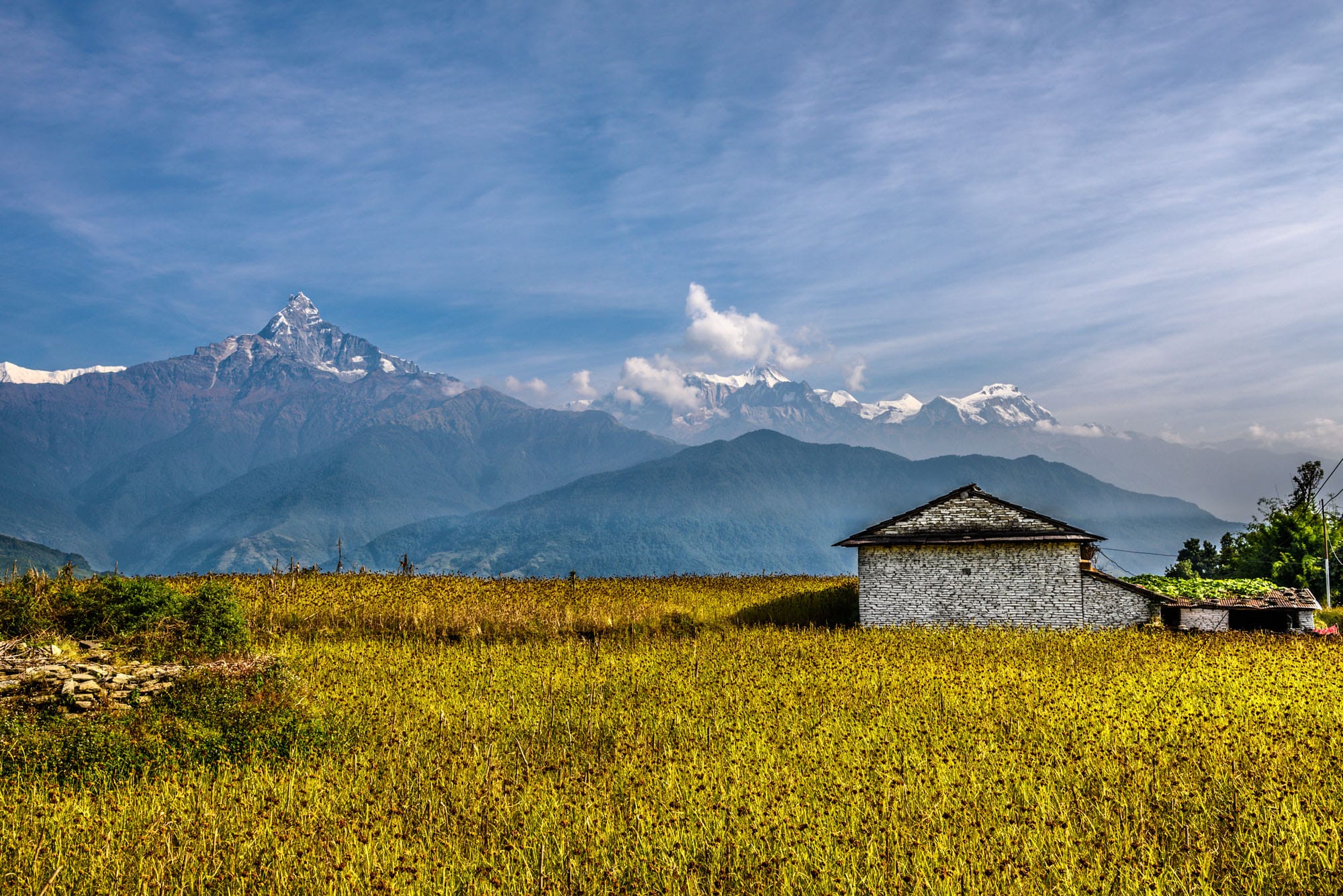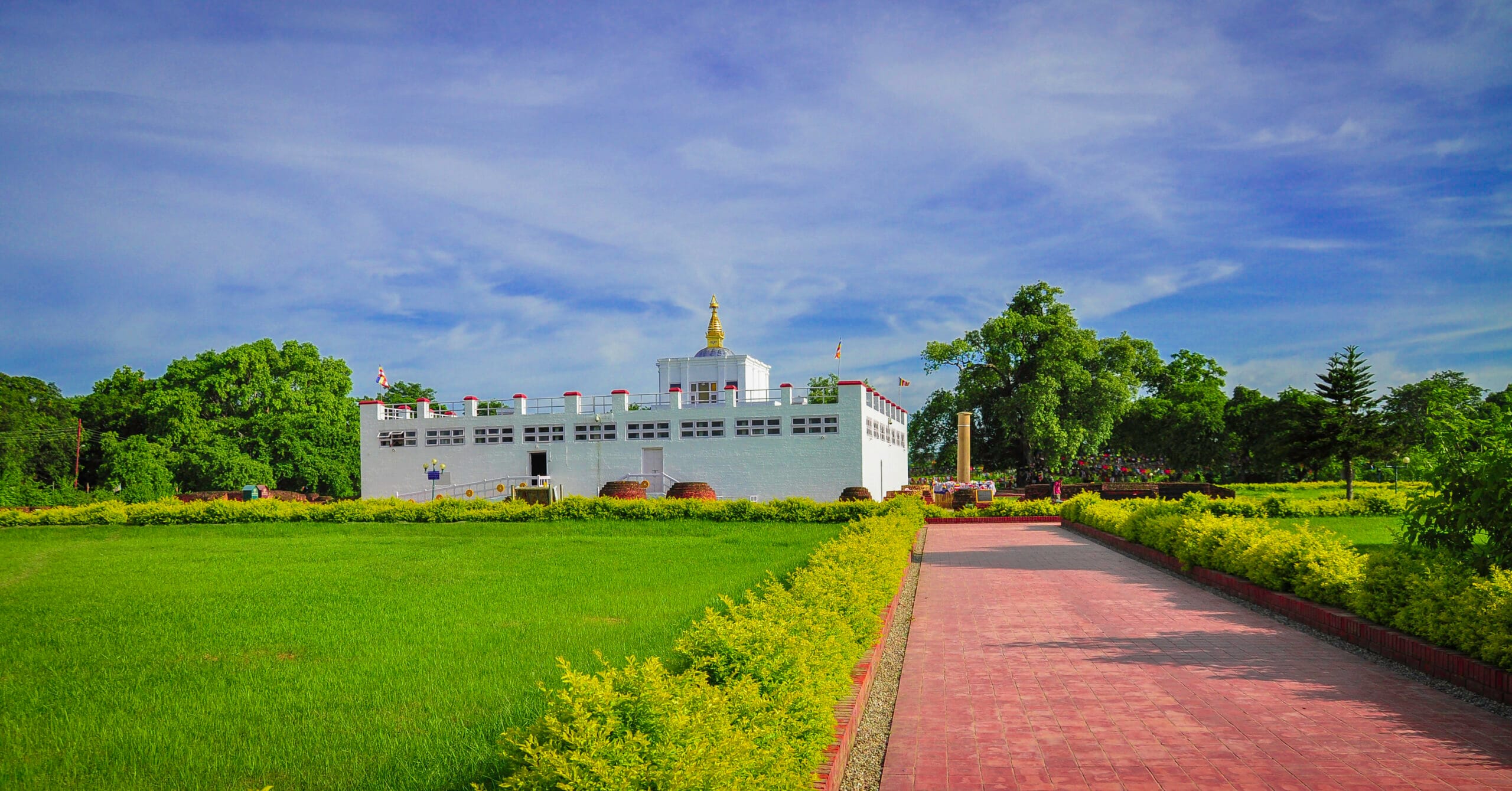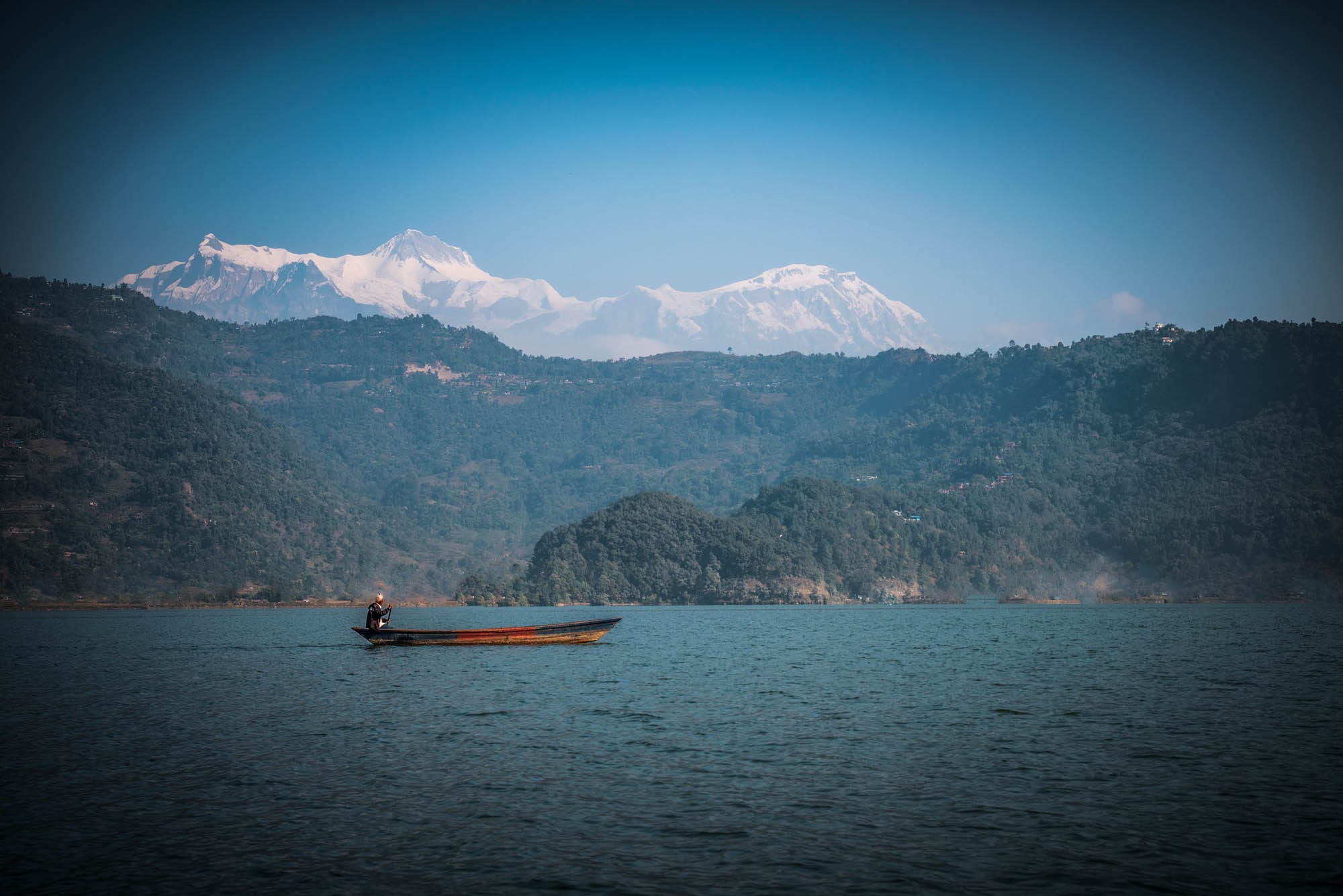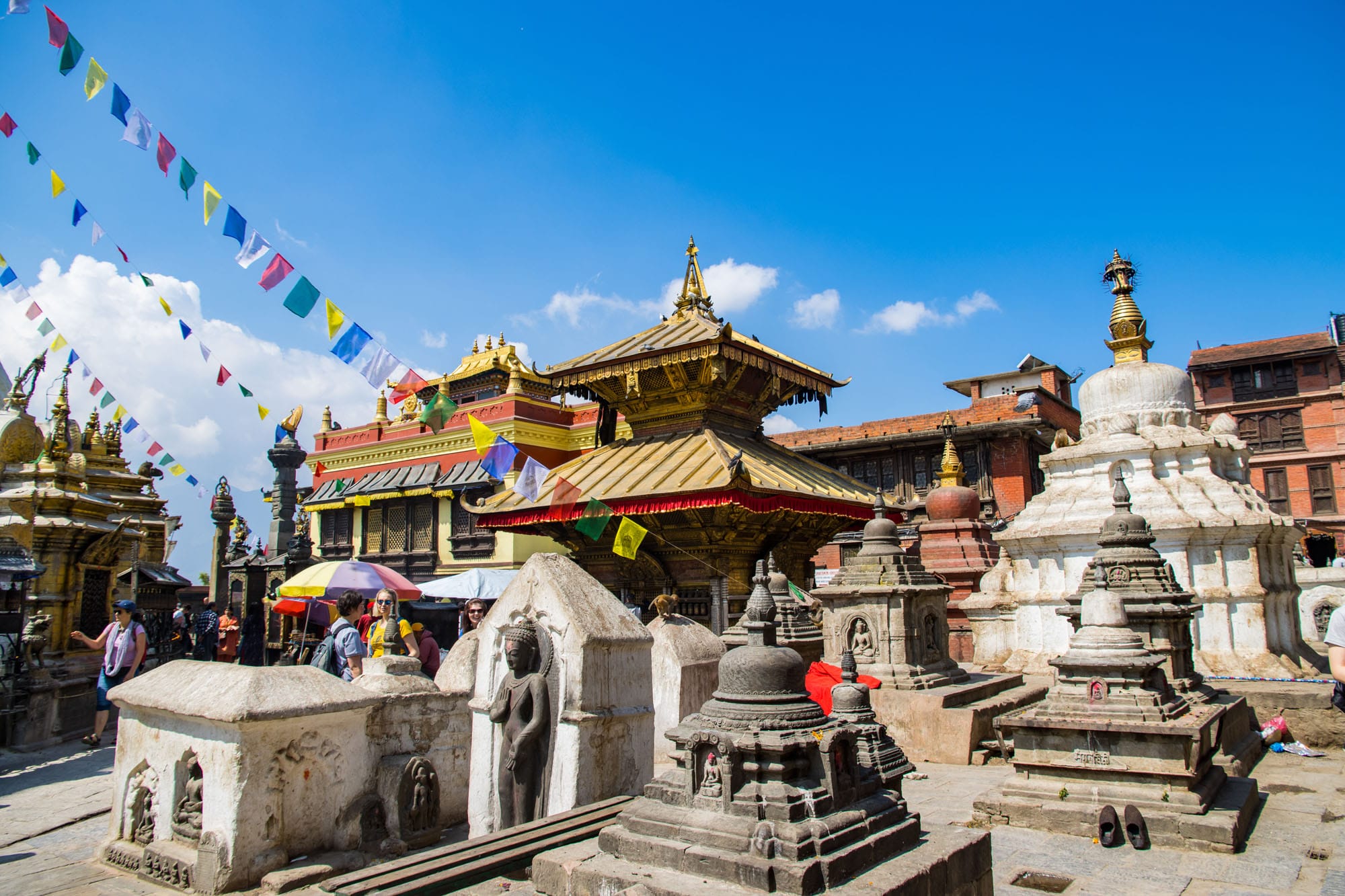Everest Base Camp Helicopter Tour – 1 Day
Best Season
Highest Altitude
Trip Overview
The Everest Base Camp Helicopter Tour offers a once-in-a-lifetime opportunity to witness the world’s highest peak up close.The Everest Base Camp one-day tour is designed for adventurers who want to experience the grandeur of Mount Everest without the strenuous trek. The Everest Base Camp tour starts in Kathmandu and soar over the stunning landscapes of Nepal, including lush valleys, snow-capped peaks, and traditional Sherpa villages. As you approach the Everest region, the helicopter will descend to Everest Base Camp, where you’ll have the chance to step out and take in the breathtaking views of the Khumbu Glacier and the towering peaks around you.
Additionally, this Everest Base Camp helicopter tour includes a stop at Kalapatthar, a vantage point known for its panoramic views of Mount Everest and the surrounding Himalayan range. This journey is both thrilling and serene, offering a perfect blend of adventure and tranquility. After taking in the sights, you’ll enjoy breakfast at a high-altitude hotel with an incredible view of the Himalayas before heading back to Kathmandu. This journey is ideal for those short on time but eager to see Everest up close, making it a must-do for any traveler visiting Nepal.
Highlights of Everest Base Camp Helicopter Tour
- Scenic helicopter flight from Kathmandu to Everest Base Camp.
- Stunning aerial views of the Himalayan range, including Mount Everest.
- Landing at Kalapatthar for unparalleled views of Mount Everest.
- Breakfast at a high-altitude hotel with panoramic mountain views.
- Return flight with views of traditional Sherpa villages and the Khumbu Glacier.
Itinerary
Your journey begins just before sunrise with a hotel pick-up and transfer to the domestic terminal of Tribhuvan International Airport. After a safety briefing and final checks, you board a powerful high-altitude helicopter built for Himalayan conditions. As the rotors begin to spin, you lift off from the Kathmandu Valley and head northeast. Within minutes, the cityscape fades beneath you, replaced by a sea of emerald hills and serpentine rivers. The morning light gradually spills over the landscape, illuminating distant peaks and casting long shadows across the terrain. This ascent through ever-changing elevations sets the tone for a breathtaking Himalayan experience that feels both surreal and cinemati
As you approach the Khumbu region, the full majesty of the Himalayas begins to unfold. Towering peaks like Ganesh Himal, Gauri Shankar, and Dorje Lakpa gradually give way to the legendary giants: Lhotse, Nuptse, Ama Dablam, Thamserku, and of course, the crown jewel—Mount Everest (Sagarmatha). The pilot navigates close to these peaks, often circling for panoramic views and photo opportunities. You’ll be flying above the famous trekking route, catching glimpses of Namche Bazaar, Tengboche Monastery, and the Dudh Koshi River far below. The dramatic ridgelines, hanging glaciers, and vast snowfields create a natural amphitheater of pure white beauty—utterly awe-inspiring even for seasoned travelers.
Depending on weather, altitude safety, and crowding, your helicopter either lands at or hovers near Everest Base Camp(5,364 m) or Kala Patthar (5,545 m), offering a bird’s-eye view of the legendary expedition staging ground. During climbing season, you may spot rows of colorful tents nestled among the rocky moraine. The towering face of Nuptse looms just ahead, and Everest’s snowy summit peeks beyond, radiating raw power and beauty. The landing site is surrounded by stark, surreal alpine landscapes—rocks, ice, and snow stretching in every direction. Though time here is brief (typically 10–15 minutes due to high altitude), it offers a close-up experience of the world’s highest battlefield of endurance.
If the earlier stop was near Base Camp, your next landing is at Kala Patthar, a vantage point known for offering the best close-up views of Mount Everest. Hovering at 5,545 meters, this site provides a rare chance to disembark momentarily, step into the Himalayan silence, and take in a sweeping panorama of Everest, Pumori, Lhotse, and the surrounding giants. The air is thin and crisp; the only sound is the whisper of wind over snow. This is the highlight moment for many—standing nearly level with the world’s highest peaks, completely surrounded by Himalayan greatness. It's a deeply humbling, exhilarating experience that resonates long after the flight ends.
After soaking in the splendor at Kala Patthar, you’ll descend to a lower, more oxygen-rich elevation for a warm and hearty breakfast at Everest View Hotel in Syangboche (3,880 m). Perched above Namche Bazaar, this legendary hotel offers one of the world’s highest dining spots—with Mount Everest perfectly framed through panoramic windows. Over hot coffee, tea, and a traditional breakfast spread, you can reflect on the awe of standing so close to the top of the world. The contrast of luxury and wilderness is striking, with the comforts of warm hospitality served beside glaciers, cliffs, and sky-touching peaks.
With your heart and memory card full, the helicopter begins its descent from Syangboche, retracing the route past winding valleys, rivers, alpine forests, and Sherpa villages. As you fly over Lukla and Phaplu, you’ll gain an even deeper appreciation for the scale of the landscape—and the challenges faced by trekkers and climbers on foot. The views shift from icy expanses to warmer hill country as you return toward Kathmandu. The contrast is striking, as the jagged peaks of the Himalayas slowly give way to the bustling sprawl of the city far below.
You touch down in Kathmandu around 10:30 AM, concluding a truly once-in-a-lifetime journey. A vehicle awaits to transfer you back to your hotel, allowing time to rest, reflect, and relive the experience. In the span of just a few hours, you’ve flown over deep valleys and high passes, stood near the top of the world, and dined above the clouds. Whether you undertook the tour for the adventure, photography, or to fulfill a lifelong dream, the Everest Helicopter Tour offers a profoundly moving glimpse into one of Earth’s most iconic landscapes—an experience you’ll carry with you forever.
Book Now
Inquiry / Customization
Got A Question?

Mr. Shishir Dhakal
Price Inclusion
- Scenic helicopter flight from Kathmandu to Everest Base Camp and return.
- Landing permit and national park fees.
- Experienced pilot and helicopter crew.
- Breakfast at a scenic location.
Price Exclusion
- Personal expenses and tips.
- Travel insurance.
- Any meals or drinks not mentioned in the itinerary.
Additional Information
Meals and Accommodation
Since this is a one-day helicopter tour, overnight accommodation isn’t required, as you’ll be returning to Kathmandu by mid-morning.
- Breakfast: During the tour, you’ll enjoy a memorable breakfast at a high-altitude hotel, typically at the Everest View Hotel or a similar location. Here, you can savor a hearty meal with panoramic views of Mount Everest and the surrounding Himalayan peaks. The menu usually includes a variety of options, from traditional Nepali dishes to continental favorites, providing a refreshing break in the midst of your mountain adventure.
- Additional Refreshments: On the helicopter and at brief stopovers, light snacks and water are available to ensure you stay hydrated and energized.
Best Season for Everest Base Camp Helicopter Tour
The best times for the Everest Base Camp Helicopter Tour are spring (March to May) and autumn (September to November). During these seasons, stable weather, clear skies, and excellent visibility make for a smooth and scenic flight, with ideal conditions for viewing and photographing Everest and the surrounding landscape.
- Spring (March to May): Clear skies, warmer weather, and blooming rhododendrons enhance the views of the Himalayas.
- Autumn (September to November): Post-monsoon clarity offers stunning vistas of Everest and the Khumbu Glacier, with cooler, crisp air.
- Winter (December to February): Offers clear visibility, but temperatures are colder. Flight availability can be limited due to snow.
- Monsoon (June to August): Not recommended, as heavy rain and fog can reduce visibility, and flights are more prone to delays and cancellations.
Equipment Checklist
Though this is a short day tour, it’s still essential to bring some basic items to ensure comfort and safety in high-altitude conditions.
1. Clothing
- Base Layer: Lightweight, moisture-wicking shirt to stay comfortable.
- Outer Layer: Insulated, windproof jacket; temperatures in the mountains can be cool even during the day.
- Trekking Pants: Comfortable pants for walking around Kyanjin Gompa.
- Warm Accessories: Hat, gloves, and a neck gaiter to protect against cooler air at high altitudes.
2. Footwear
- Trekking Boots: Sturdy and comfortable boots for short walks on uneven terrain.
- Socks: Warm, moisture-wicking socks to keep your feet comfortable.
3. Accessories
- Sunglasses with UV Protection: Essential to protect against strong sunlight and glare from the snow.
- Sunscreen and Lip Balm: High SPF sunscreen and lip balm to protect against sun exposure.
- Water Bottle: A reusable water bottle to stay hydrated throughout the tour.
4. Electronics and Extras
- Camera/Smartphone: For capturing the stunning scenery; consider a small power bank for extra battery life.
- Personal Toiletries: Hand sanitizer and wet wipes for basic hygiene.
- Cash: Bring a small amount of local currency in case you want to buy snacks or souvenirs at Kyanjin Gompa.
5. Documents
- Passport/ID: Necessary for identification and registration.
Final Tips
- Dress in Layers: Mountain temperatures can vary, so layered clothing is best.
- Pack Light: Carry only essential items to stay comfortable on the helicopter.
- Weather Check: Helicopter flights depend on weather conditions, so keep updated on any potential changes to your tour plan.
Frequently Asked Questions(FAQs)
How reliable are the flights to Lukla airport?
Flights to Lukla airport, also known as Tenzing-Hillary Airport, can be unpredictable due to the airport’s unique location and weather conditions. Our team at Mount Elegance Treks and Expedition recommends the following:
Flight Schedule: Flights to Lukla usually depart from Kathmandu’s Tribhuvan International Airport (KTM) in the morning, and the schedule may change depending on weather conditions.
Weather Conditions: Lukla airport is prone to weather delays and cancellations, especially during the monsoon season (June to August) and winter months (December to February).
Flight Cancellation: In case of flight cancellation, our team will work with you to find alternative arrangements, including accommodation and transportation.
Rebooking: If your flight is delayed or cancelled, you can rebook on a later flight, subject to availability.
Tips:
Book Flexible Flights: Book flights with flexible rebooking policies to accommodate any changes in your itinerary.
Check Weather Forecast: Check the weather forecast before your flight to Lukla, and be prepared for any changes.
Have a Contingency Plan: Have a contingency plan in place, including accommodation and food, in case of flight delays or cancellations.
Lukla Airport Information:
Tenzing-Hillary Airport: The airport in Lukla has a limited capacity, and flights may be delayed or cancelled due to weather conditions.
* Airport Facilities: The airport has basic facilities, including a few restaurants, shops, and restrooms.
Our team at Mount Elegance Treks and Expedition can assist with flight bookings, rebooking, and alternative arrangements to ensure a smooth journey to Lukla airport. We recommend checking with your airline and our team for the latest information on flights to Lukla.
How do I book domestic flights within Nepal?
Booking domestic flights within Nepal is a straightforward process. Our team at Mount Elegance Treks and Expedition is happy to assist you with booking flights. Here’s a step-by-step guide:
Contact Us: Simply contact us through our website, email, or phone, and let us know your travel details, including your departure and arrival dates, route, and class of service.
Choose Your Flight: We will provide you with a selection of flights to choose from, and help you select the best option based on your needs and budget.
Payment: Once you’ve confirmed your flight, we will guide you through the payment process, which can be made by credit card, bank transfer, or cash.
Booking Confirmation: After payment, we will send you a booking confirmation with your flight details, including your flight number, departure and arrival times, and seat allocation.
Domestic Flight Operators:
Nepal Airlines: The national carrier of Nepal, offering flights to major destinations, including Lukla, Pokhara, and Biratnagar.
Yeti Airlines: A popular domestic airline, offering flights to major destinations, including Lukla, Pokhara, and Bharatpur.
Simrik Air: A regional airline, offering flights to major destinations, including Lukla, Phaplu, and Jomsom.
Tips:
Book in Advance: Book your domestic flights in advance to ensure availability, especially during peak travel seasons.
Check Flight Schedule: Check the flight schedule in advance to plan your itinerary and avoid any last-minute changes.
Have a Backup Plan: Have a backup plan in place, including accommodation and transportation, in case of flight delays or cancellations.
Our team at Mount Elegance Treks and Expedition is committed to providing you with a seamless and stress-free booking experience. We are always available to answer any questions you may have and to assist with any changes to your flight booking.
Does travel insurance cover helicopter rescue in Nepal?
Yes, many travel insurance policies cover helicopter rescue in Nepal, but it’s essential to check the policy terms and conditions. Our team at Mount Elegance Treks and Expedition recommends that you purchase a travel insurance policy that includes emergency evacuation, including helicopter rescue, in the following situations:
Accident or Illness: If you’re involved in an accident or suffer from a serious illness while trekking or traveling in Nepal, your insurance policy may cover helicopter rescue to a medical facility.
Natural Disaster: If a natural disaster such as an earthquake or landslide occurs, and you’re in a remote area, your insurance policy may cover helicopter rescue to safety.
High-Altitude Sickness: If you’re trekking at high altitudes and experience altitude sickness, your insurance policy may cover helicopter rescue to a lower altitude for medical treatment.
Policy Exclusions:
Pre-Existing Medical Conditions: Some policies may not cover pre-existing medical conditions, so it’s essential to disclose any medical conditions when purchasing insurance.
Intentional Actions: Policies may not cover helicopter rescue if the emergency is caused by intentional actions, such as reckless behavior.
Recommended Insurance Providers:
Allianz: Offers emergency evacuation, including helicopter rescue, in Nepal.
AXA: Provides coverage for medical emergencies, including helicopter rescue, in Nepal.
Travel Guard: Offers emergency evacuation, including helicopter rescue, in Nepal, subject to policy terms and conditions.
Tips:
Check the Policy Terms: Carefully read the policy terms and conditions to understand what is covered and what is not.
Understand the Deductible: Understand the deductible amount and how it affects your claim.
* Purchase Insurance Early: Buy insurance as soon as you book your trip to ensure coverage.
Our team at Mount Elegance Treks and Expedition recommends that you purchase travel insurance that covers helicopter rescue in Nepal to ensure a safe and enjoyable trip. We can provide you with more information on travel insurance providers and help you choose the right policy for your needs.
What common health issues do travelers face in Nepal?
Nepal is a beautiful country with a unique climate and culture, but it can also present some health challenges for travelers. Our team at Mount Elegance Treks and Expedition wants to ensure that you’re prepared and aware of the common health issues that travelers may face in Nepal:
Altitude Sickness: Also known as Acute Mountain Sickness (AMS), this can occur when traveling to high altitudes, such as during trekking or climbing. Symptoms include headaches, nausea, and fatigue.
Dehydration: Nepal’s climate can be hot and dry, leading to dehydration if you don’t drink enough water. Symptoms include headaches, fatigue, and dark urine.
Insect-Borne Illnesses: Mosquito-borne illnesses such as dengue fever and malaria are present in Nepal, especially during the monsoon season.
Food and Water-Borne Illnesses: Travelers can be susceptible to food and water-borne illnesses, such as diarrhea, stomach cramps, and vomiting, especially if they don’t drink bottled or purified water.
Heat-Related Illnesses: Nepal’s heat and humidity can cause heat exhaustion and heatstroke, especially during the summer months.
Cold-Related Illnesses: At higher altitudes, the temperature can drop significantly, leading to cold-related illnesses such as hypothermia and frostbite.
Prevention and Preparation:
Consult Your Doctor: Before traveling to Nepal, consult your doctor about any health concerns and get recommended vaccinations.
Pack Essentials: Pack essentials such as sunscreen, insect repellent, and medications for altitude sickness and other conditions.
Stay Hydrated: Drink plenty of bottled or purified water to stay hydrated.
Eat Clean Food: Eat clean food and avoid undercooked meat, raw vegetables, and untreated water.
Acclimatize: Acclimatize to high altitudes by ascending gradually and giving your body time to adjust.
What to Do in Case of an Emergency:
Seek Medical Attention: If you experience any symptoms of illness or injury, seek medical attention immediately.
Contact Your Embassy: Contact your embassy or consulate for assistance and guidance.
Call Our Emergency Number: Our team has an emergency number that you can call in case of an emergency.
Our team at Mount Elegance Treks and Expedition is committed to providing you with a safe and healthy travel experience in Nepal. We can provide you with more information on health and safety tips and recommendations for preventing common health issues.
What altitude sickness symptoms should I watch for?
Altitude sickness, also known as Acute Mountain Sickness (AMS), can be a concern for travelers to high-altitude destinations in Nepal. Our team at Mount Elegance Treks and Expedition wants to ensure that you’re aware of the symptoms to watch for and know what to do if you experience them.
Common Symptoms of Altitude Sickness:
Headache: A severe headache is one of the most common symptoms of altitude sickness.
Fatigue: Feeling weak, tired, or sluggish is a common symptom of altitude sickness.
Nausea and Vomiting: Some people may experience nausea and vomiting, especially after eating.
Dizziness and Lightheadedness: You may feel dizzy or lightheaded, especially when standing up or walking.
Shortness of Breath: You may experience shortness of breath or difficulty breathing, even at rest.
Coughing: Coughing up pink, frothy mucus is a sign of altitude sickness.
Loss of Appetite: You may lose your appetite or feel like eating is a chore.
Severe Symptoms to Watch For:
Confusion and Disorientation: If you experience confusion, disorientation, or difficulty speaking, seek medical attention immediately.
Seizures: If you experience seizures, seek medical attention right away.
Chest Pain: If you experience chest pain or difficulty breathing, seek medical attention immediately.
What to Do If You Experience Altitude Sickness Symptoms:
Descend to a Lower Elevation: If you experience symptoms, descend to a lower elevation as soon as possible.
Rest and Hydrate: Get plenty of rest and drink plenty of fluids to help your body adjust.
Seek Medical Attention: If your symptoms worsen or you experience severe symptoms, seek medical attention immediately.
Prevention is Key:
Ascend Gradually: Ascend to higher elevations gradually, allowing your body to adjust.
Stay Hydrated: Drink plenty of fluids to help your body adjust to the high altitude.
Get Enough Rest: Get plenty of rest and avoid overexerting yourself.
Our team at Mount Elegance Treks and Expedition is committed to providing you with a safe and healthy travel experience in Nepal. If you have any concerns about altitude sickness or your health, please don’t hesitate to ask.
What services does Mount Elegance Treks offer?
At Mount Elegance Treks and Expedition, we offer a wide range of services to make your adventure in Nepal a memorable and hassle-free experience. Our team of experts is dedicated to providing you with the best possible services, from trekking and peak climbing to cultural tours and wilderness expeditions.
Trekking and Expedition Services
We offer a variety of trekking and expedition services, including:
Trekking: We offer guided trekking services to popular destinations such as the Everest Base Camp, Annapurna Circuit, and Langtang Valley.
Peak Climbing: Our experienced guides and climbers will help you conquer some of the highest peaks in the world, including Island Peak and Mera Peak.
Wildlife Tours: Join us on a wildlife tour to see the majestic Bengal tiger, one-horned rhinoceros, and other endangered species in their natural habitats.
Cultural Tours: Explore Nepal’s rich cultural heritage on a guided tour, visiting ancient temples, monasteries, and traditional villages.
Logistical Services
We also offer a range of logistical services, including:
Hotel Booking: We can book your hotel accommodations in Kathmandu and other destinations in Nepal.
Transportation: Our team can arrange for transportation to and from the trekking start point, as well as during the trek.
Permits and Licenses: We will handle all necessary permits and licenses for your trek or expedition.
Camping and Lodging: We can provide camping and lodging facilities during your trek or expedition.
Support Services
Our team is dedicated to providing you with support services, including:
Guided Tours: Our experienced guides will accompany you on your trek or expedition, providing valuable insights and support.
Cuisine: We can provide you with delicious and nutritious meals during your trek or expedition.
First Aid: Our guides are trained in first aid and can provide medical assistance in case of an emergency.
Communication: We can provide you with communication facilities, including satellite phones and internet access.
Mount Elegance Treks’ Commitment to Quality
At Mount Elegance Treks and Expedition, we are committed to providing you with the highest quality services and experiences. Our team of experts is dedicated to ensuring your safety, happiness, and satisfaction. We look forward to welcoming you to Nepal and sharing our country’s beauty and culture with you.
How experienced are Mount Elegance Treks guides?
At Mount Elegance Treks and Expedition, we take pride in our team of experienced and knowledgeable guides who are dedicated to providing you with a safe and enjoyable trekking experience in Nepal. Our guides are the backbone of our company, and we invest heavily in their training and development to ensure that they meet the highest standards of professionalism and expertise.
Guide Qualifications and Experience
Our guides have a minimum of 5 years of experience in leading treks and expeditions in Nepal, and many have been guiding for 10-20 years or more. They are all certified by the Nepal Government and have undergone extensive training in areas such as:
First Aid and Emergency Response: Our guides are trained in basic first aid and emergency response, and know how to handle situations such as altitude sickness, injuries, and illnesses.
Mountain Safety and Risk Management: Our guides are trained in mountain safety and risk management, and know how to assess and mitigate risks on the mountain.
Cultural Sensitivity and Awareness: Our guides are trained in cultural sensitivity and awareness, and know how to interact with local communities in a respectful and sensitive manner.
Language and Communication: Our guides are proficient in multiple languages, including English, Nepali, and other local dialects, and know how to communicate effectively with clients from diverse backgrounds.
Guide-to-Cliuent Ratio
We believe in providing a high guide-to-client ratio to ensure that each client receives personalized attention and care. Our standard ratio is 1 guide to 4 clients, but we can adjust this ratio to meet the needs of individual groups.
Mount Elegance Treks’ Guide Selection Process
We select our guides carefully, based on their experience, qualifications, and personal qualities. We look for guides who are not only knowledgeable and skilled, but also friendly, enthusiastic, and dedicated to providing exceptional client service. We are proud of our team of guides, and we know that they will provide you with a memorable and enjoyable trekking experience in Nepal.
What makes Mount Elegance Treks different from other trekking companies?
At Mount Elegance Treks and Expedition, we’re proud to stand out from the crowd with our unique approach to trekking and expedition services. While other companies may offer similar itineraries and tours, we focus on providing a personalized, authentic, and sustainable experience that sets us apart.
Our Commitment to Sustainability
We’re dedicated to responsible and sustainable tourism practices, which means we prioritize the well-being of our clients, local communities, and the environment. We work with locally-owned tea houses and lodges, which helps to support the local economy and preserves the natural beauty of the region.
Personalized Travel Experience
We believe that every traveler is unique, and we tailor our itineraries to meet the specific needs and interests of our clients. Whether you’re a seasoned adventurer or a first-time trekker, we’ll work with you to create a personalized itinerary that ensures an unforgettable experience.
Local Expertise and Knowledge
Our team of guides and staff are locals who have grown up in the mountains and have extensive knowledge of the region. They’ll share their insights and stories with you, providing a deeper understanding of the culture, history, and natural beauty of Nepal.
Innovative and Sustainable Practices
We’re constantly looking for ways to improve our operations and minimize our impact on the environment. We use eco-friendly materials, reduce waste, and support conservation efforts in the region.
Mount Elegance Treks’ Core Values
At Mount Elegance Treks, we’re guided by a set of core values that reflect our commitment to:
Quality: We strive for excellence in everything we do.
Integrity: We operate with transparency and honesty.
Respect: We respect our clients, local communities, and the environment.
Innovation: We’re always looking for new and better ways to provide exceptional service.
Experience the Mount Elegance Treks Difference
When you choose Mount Elegance Treks, you’re not just booking a trek – you’re joining a community of like-minded travelers who value sustainability, cultural exchange, and adventure. We look forward to welcoming you to Nepal and sharing our passion for trekking and exploration with you.
Can Mount Elegance Treks arrange custom itineraries?
Here is a potential answer for the FAQ question:
Can Mount Elegance Treks arrange custom itineraries?
Absolutely! At Mount Elegance Treks, we understand that every traveler is unique, with their own interests and preferences. That’s why we offer custom itinerary planning services to tailor your Nepal travel experience to your specific needs and desires. Whether you’re looking to add or remove activities, extend your stay, or explore off-the-beaten-path destinations, our expert team is happy to work with you to create a personalized trip that exceeds your expectations. Simply contact us to share your ideas and let us take care of the rest!
Does Mount Elegance Treks offer group discounts?
Here is a potential answer for the FAQ question:
Does Mount Elegance Treks offer group discounts?
Yes, we do! Mount Elegance Treks offers special group discounts for 8 or more people traveling together. By booking as a group, you can enjoy significant savings on our already competitive pricing. Whether you’re a school group, a corporate team, or a family reunion, we’d be happy to work with you to create a custom itinerary and provide a quote for your group. Simply contact us with your group details and we’ll take care of the rest!
How do I book a trek with Mount Elegance Treks?
Here is a potential answer for the FAQ question:
How do I book a trek with Mount Elegance Treks?
Booking a trek with us is easy and straightforward. To confirm your trip, simply follow these steps: 1) Choose your desired trek itinerary from our website or contact us to customize a trip, 2) Provide us with your travel dates, passenger details, and preferred payment method, 3) Receive a detailed itinerary and quote from our team, 4) Make a deposit to secure your booking, and 5) Finalize payment and complete any necessary paperwork. You can book online, email us at [email address], or call us at [phone number] to speak with a friendly booking consultant. We look forward to helping you plan an unforgettable adventure in Nepal!
Does Mount Elegance Treks provide airport pickup?
Here is a potential answer for the FAQ question:
Does Mount Elegance Treks provide airport pickup?
Yes, we do! As part of our commitment to making your travel experience seamless, Mount Elegance Treks offers complimentary airport pickup and drop-off services for all our clients. Upon your arrival at Tribhuvan International Airport in Kathmandu, our representative will be waiting to greet you and escort you to your hotel. Similarly, upon your departure, we’ll ensure that you’re transferred to the airport on time for your flight. This service is included in your package, so you can relax and focus on the excitement of your upcoming adventure!
Are Mount Elegance Treks guides certified in first aid?
Here is a potential answer for the FAQ question:
Are Mount Elegance Treks guides certified in first aid?
Yes, our guides are highly trained and certified in wilderness first aid. We take the safety and well-being of our clients very seriously, and our guides undergo regular training to ensure they are equipped to respond to any medical emergency that may arise during the trek. Our guides are certified in basic life support, wound management, and altitude sickness prevention, among other topics. Additionally, we carry a comprehensive first aid kit with us on every trek, and our guides are trained to use it effectively. You can feel confident and secure knowing that you’re in good hands with Mount Elegance Treks!
Does Mount Elegance Treks arrange permits for trekking?
Here is a potential answer for the FAQ question:
Does Mount Elegance Treks arrange permits for trekking?
Yes, we take care of all the necessary permits and paperwork for our treks. As a licensed and reputable trekking operator, we have established relationships with the relevant authorities to ensure that all necessary permits are obtained in a timely and efficient manner. This includes trekking permits, national park fees, and any other required documents. Our team will arrange and obtain all the necessary permits on your behalf, so you can focus on preparing for your adventure. We’ll take care of the details, so you can enjoy a hassle-free trekking experience with Mount Elegance Treks!
What payment methods does Mount Elegance Treks accept?
Here is a potential answer for the FAQ question:
What payment methods does Mount Elegance Treks accept?
At Mount Elegance Treks, we offer a range of payment options to make booking your trek as convenient as possible. We accept bank transfers, credit card payments (including Visa, Mastercard, and American Express), and online payments through our website. We also accept payment through PayPal. For bookings, a deposit of 20% is required to secure your spot, with the balance due 30 days prior to your trek departure date. Our payment process is secure and transparent, and we’ll provide you with a detailed invoice and payment instructions once you’ve booked your trek. If you have any questions or concerns about payment, feel free to contact us!
Does Mount Elegance Treks require a deposit for booking?
Here is a potential answer for the FAQ question:
Does Mount Elegance Treks require a deposit for booking?
Yes, to secure your spot on one of our trekking adventures, a deposit of 20% of the total tour cost is required at the time of booking. This deposit is a non-refundable portion of the total cost, but it ensures your place on the trek. The balance of the payment is due 30 days prior to your trek departure date. By paying the deposit, you’re committing to join us on this amazing adventure, and we’ll send you a confirmation invoice and all the necessary details to get you started. Don’t worry, we’ll guide you through the payment process and answer any questions you may have!
What is Mount Elegance Treks' cancellation policy?
Here is a potential answer for the FAQ question:
What is Mount Elegance Treks’ cancellation policy?
At Mount Elegance Treks, we understand that unexpected circumstances can arise, and we’re committed to being fair and flexible. If you need to cancel your trek, our cancellation policy is as follows: cancellations made 30 days or more prior to the departure date will receive a full refund minus the 20% deposit. Cancellations made between 29 days and 15 days prior to the departure date will receive a 50% refund. Cancellations made 14 days or less prior to the departure date are non-refundable. We also offer the option to transfer your booking to a future trek, subject to availability. We recommend that you purchase travel insurance to cover any unforeseen circumstances that may affect your trip. If you have any questions or concerns about our cancellation policy, please don’t hesitate to contact us!
Can Mount Elegance Treks arrange accommodation before and after treks?
Here is a potential answer for the FAQ question:
Can Mount Elegance Treks arrange accommodation before and after treks?
Yes, we can definitely help you with accommodation arrangements before and after your trek. We have a network of hand-picked hotels, lodges, and tea houses that offer a range of options to suit different budgets and preferences. We can arrange for you to stay in Kathmandu or other cities before your trek, and also book your accommodation in local villages or towns along the way. Our team will work with you to tailor a customized accommodation plan that meets your needs and preferences. We can also provide recommendations and bookings for additional services such as airport transfers, city tours, and sightseeing activities. Just let us know what you’re looking for, and we’ll take care of the rest!
How can I contact Mount Elegance Treks in an emergency?
Here is a potential answer for the FAQ question:
How can I contact Mount Elegance Treks in an emergency?
In the event of an emergency, please don’t hesitate to reach out to us. We have a 24-hour emergency contact system in place, and you can contact us directly on + [phone number] or by emailing [email address]. We also have a dedicated emergency contact person who is available at all times to assist with any urgent matters. Additionally, all our treks are led by experienced guides who are equipped with mobile phones and two-way radios, and can quickly get in touch with us in case of an emergency. We prioritize your safety and well-being, and we’re always here to help in case of an unexpected situation.
What happens if my Lukla flight is delayed or cancelled?
Here is a potential answer for the FAQ question:
What happens if my Lukla flight is delayed or cancelled?
Lukla flights can sometimes be delayed or cancelled due to weather conditions, air traffic, or technical issues. If your flight is delayed or cancelled, our team will be notified immediately and we will work with you to find the best alternative solution. We have established relationships with other airlines and transportation providers, and we can offer you options such as a helicopter flight, a road transfer to Jiri, or a postponement of your trek to the next available flight. Our goal is to minimize any disruption to your itinerary and ensure that you can continue with your trek as planned. We will keep you updated on the status of your flight and provide you with regular communication and support to ensure a smooth and stress-free experience. Don’t worry, we’ve got you covered in case of any unexpected delays or cancellations!
Are there alternative routes if flights to Lukla are not available?
Here is a potential answer for the FAQ question:
Are there alternative routes if flights to Lukla are not available?
Yes, we have alternative routes and options available if flights to Lukla are not available. In such cases, we can arrange a road transfer to Jiri (1,950m/6,398ft) and then a trek to Lukla, which takes around 2-3 days. This route offers a scenic and relatively easy trek, with stunning views of the surrounding mountains. We can also arrange a charter helicopter from Kathmandu to Lukla, which can be a more convenient option. Our experienced team will assess the situation and provide you with the best available options, ensuring that you can still achieve your trekking goals. We are dedicated to making your trekking experience seamless and enjoyable, even in the face of unexpected challenges.
